Conquest of Space
6 /10 1 Votes6
Initial DVD release October 19, 2004 Duration Language English | 5.9/10 IMDb Genre Sci-Fi Country United States | |||||||||||||||||||||||||||||||||
 | ||||||||||||||||||||||||||||||||||
Release date April 20, 1955 (1955-04-20) Writer Chesley Bonestell (book), Willy Ley (book), Philip Yordan (adaptation), Barre Lyndon (adaptation), George Worthing Yates (adaptation), James OHanlon Cast (Gen. Samuel T. Merritt), (Capt. Barney Merritt), (Sgt. Mahoney), (Jackie Siegle), (Roy Cooper), (Dr. George Fenton) Similar movies Interstellar , Guardians of the Galaxy , The Martian , Independence Day , Star Trek , 2001: A Space Odyssey Tagline See how it will happen - in your lifetime! | ||||||||||||||||||||||||||||||||||
Conquest of space 1954 trailer
Conquest of Space is a 1955 American Technicolor science-fiction film from Paramount Pictures, produced by George Pal, directed by Byron Haskin, that stars Walter Brooke, Eric Fleming, and Mickey Shaughnessy.
Contents
- Conquest of space 1954 trailer
- 1955 conquest of space movie trailer
- Plot
- Production
- Title sequence
- Critical response upon release
- Later critiques
- References
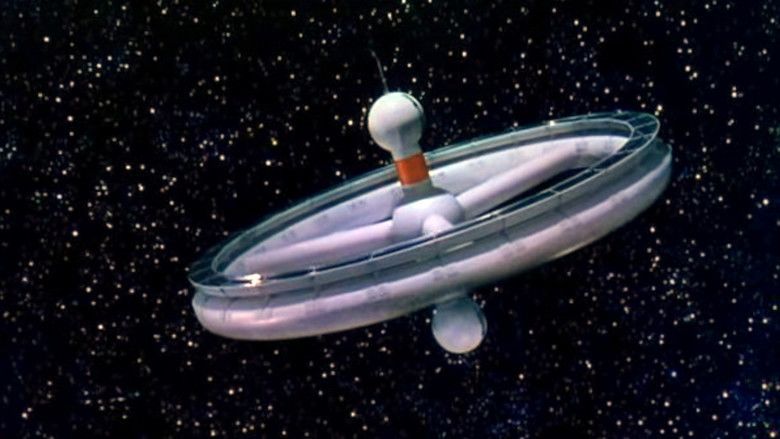
The storyline concerns the first interplanetary flight to the planet Mars, manned by a crew of five, and launched from Earth orbit near "The Wheel", mankind's first space station. On their long journey to the Red Planet, they encounter various dangers, both from within and without, that nearly destroy the mission.

1955 conquest of space movie trailer
Plot
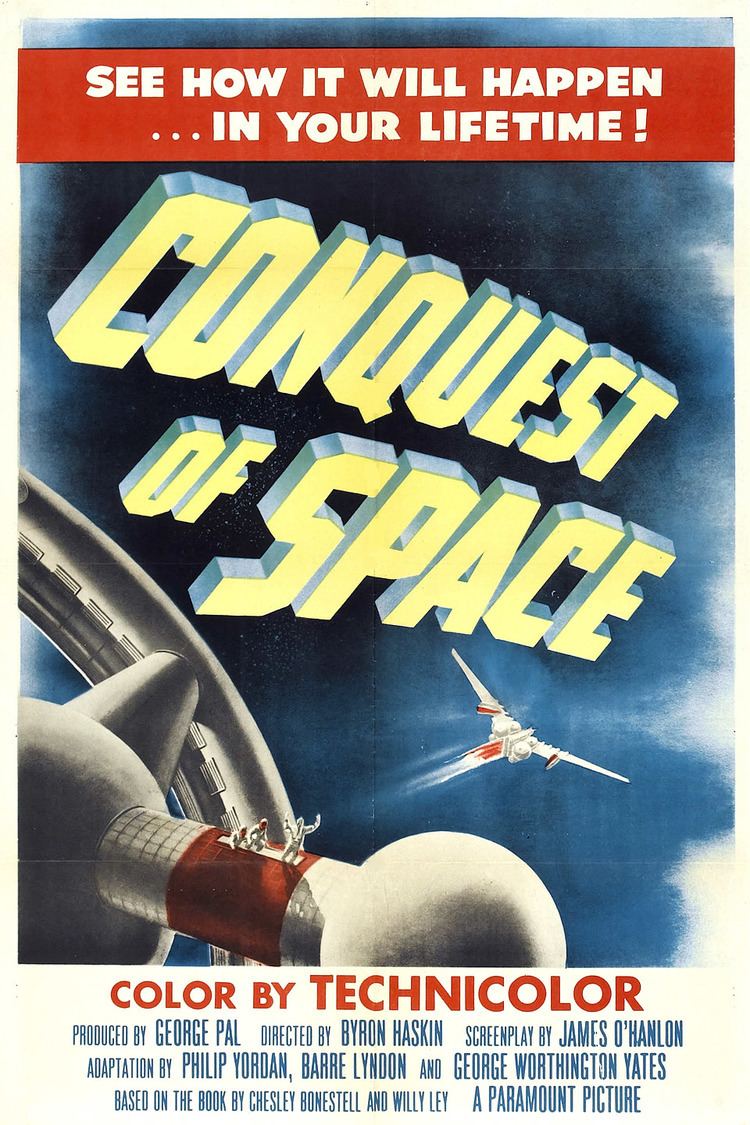
Mankind has achieved space flight capability and built "The Wheel" space station in orbit 1,075 miles above Earth. It is commanded by its designer, Colonel Samuel T. Merritt (Walter Brooke). His son, Captain Barney (Eric Fleming), having been aboard for a year, wants to return to Earth.
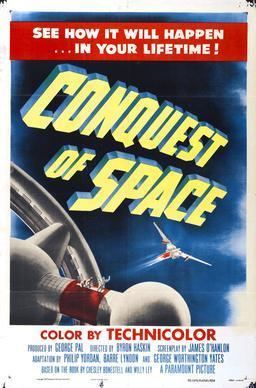
A giant spaceship has been built in a nearby orbit, and an Earth inspector arrives aboard the station with new orders: Merritt is being promoted to general and will command the new spaceship, now being sent to Mars instead of the Moon. As General Merritt considers his crew of three enlisted men and one officer, his close friend, Sgt. Mahoney (Mickey Shaughnessy) volunteers. The general turns him down for being 20 years too old. Hearing that Mars is the new destination, Barney Merritt volunteers to be the second officer.
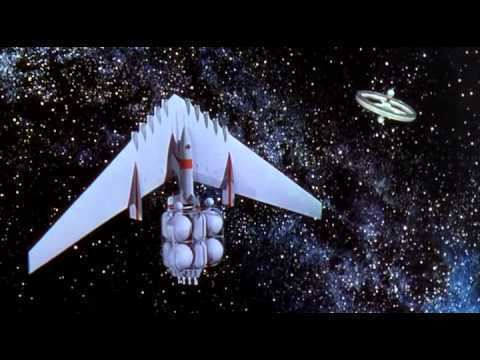
Right after the crew watches a TV broadcast from their family and friends, the mission blasts off for the Red Planet. The general's undiagnosed and growing space fatigue is beginning to seriously affect his judgement: Reading his Bible frequently, he has doubts about the righteousness of the mission. After launch, Sgt. Mahoney is discovered to be a stowaway, having hidden in a crew spacesuit. Their piloting radar antenna later fails, and two crewmen go outside to make repairs. They manage to get it working just as their monitors show a glowing planetoid, 20 times larger than their spaceship, coming at them from astern. The general fires the engines, barely managing to avoid a collision, but the planetoid's fast-orbiting debris punctures Sgt. Fodor (Ross Martin)'s spacesuit, killing him instantly. After a religious service in space, Fodor's body is cast adrift into the void.

Eight months later, the general is becoming increasingly mentally unbalanced, focusing on Sgt. Fodor's loss as "God's judgement". On the Mars landing approach, he attempts to crash their spaceship, now convinced the mission violates the laws of God. Barney wrests control away from his father, landing the large flying wing glider-rocket safely. Later, as the crew takes their first steps on the Red Planet, they look up and see water pouring down from the now vertical return rocket. Barney quickly discovers the leak is sabotage caused by his father, who threatens his son with a .45 automatic. The two struggle and the pistol discharges, killing the general. Sgt. Mahoney, who observed only the last stages of the struggle, wants Barney confined under arrest with the threat of court martial, but cooler heads prevail; Barney becomes the ranking officer.
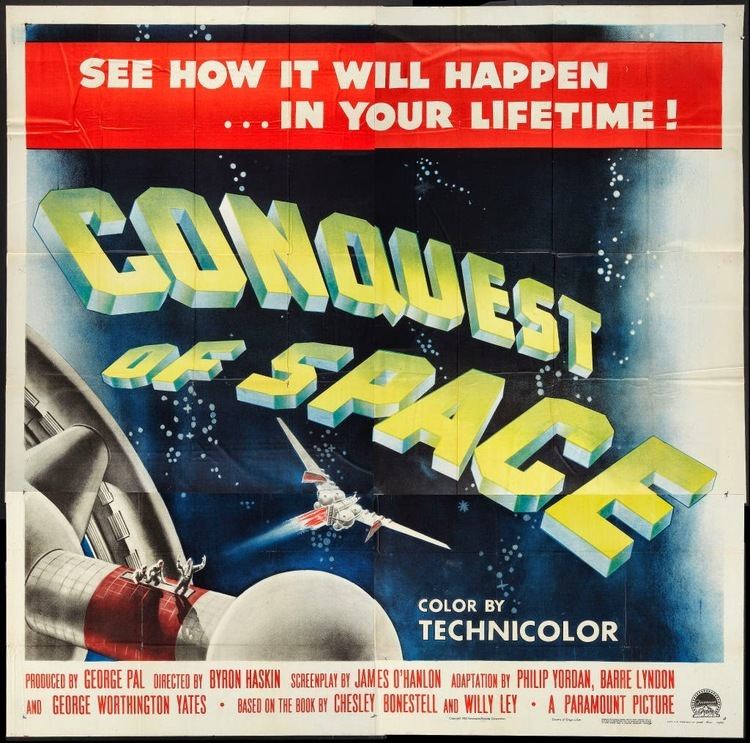
Mars proves to be inhospitable, and they struggle to survive with their decreased water supply. Earth's correct orbital position for a return trip is one year away. While glumly celebrating their first Christmas on Mars, a sudden snowstorm blows in, allowing them to replenish their water supply. As their launch window arrives, they hear low rumbling sounds, then see rocks falling, and feel the ground shake violently. The ground level shifts during this violent quake. Their spaceship is now leaning at a precarious angle and cannot make an emergency blast off. To right the spaceship, the crew uses the rocket engines' powerful thrust to shift the ground under the landing legs. The attempt works and they blast off, the spaceship rising just as the Martian surface completely collapses.
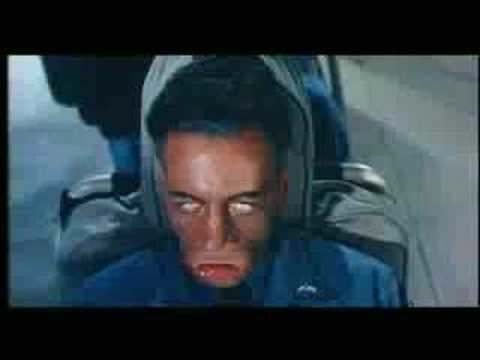
Once in space, Barney and Mahoney reconcile. Impressed with Barney's heroism and leadership while on Mars, Mahoney concludes that pursuing Barney's court martial for his father's death would only impugn the general's reputation, tarnishing what previously had been a spotless military career. Better is the fiction that "the man who conquered space" died in the line of duty, sacrificing himself to save his crew.
Production
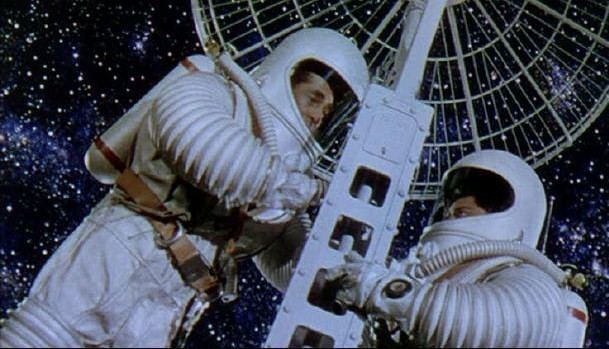
The science and technology portrayed in Conquest of Space were intended to be as realistic as possible in depicting the first voyage to Mars. The film's theatrical release poster tagline reads: "See how it will happen in your lifetime!"
The title Conquest of Space is from The Conquest of Space, a 1949 nonfiction book written by Willy Ley and illustrated by Chesley Bonestell. George Pal bought the rights to the book at the suggestion of Ley. Bonestell is noted for his photorealistic paintings showing views from outer space; he worked on the space matte paintings used in the film. However, the production design of Conquest of Space was closely modeled on the technical concepts of Wernher von Braun and space paintings of Chesley Bonestell that were originally printed in Collier's magazine and reprinted in the 1952 Viking Press book Across the Space Frontier edited by Cornelius Ryan and not from the 1949 book The Conquest of Space, as is generally, and naturally, but incorrectly, assumed.
The production also incorporated concepts from von Braun's 1952 book The Mars Project, as well as material from the April 30, 1954, issue of Collier's magazine that would in 1956 be incorporated into the Viking Press book The Exploration of Mars by Willy Ley, Wernher von Braun, and Chesley Bonestell. All of these books mainly feature text that is straight popular science with no fictional characters or story line. In addition, according to director Byron Haskin, "We had Wernher von Braun on the set all the time...as a technical advisor."
Had Producer George Pal followed any or all of these nonfiction books as written, he would have produced a speculative futuristic documentary, much like of the trio of 1955 Tomorrowland-set (Walt Disney's) Disneyland television episodes: Man in Space, Man and the Moon, and Mars and Beyond. The final screenplay by James O'Hanlon, from an adaptation by Philip Yordan, Barré Lyndon, and George Worthing Yates, instead creates a fictional story from whole cloth.
Title sequence
The title sequence for Conquest of Space unfolds in exactly two minutes. As the Paramount logo appears for five seconds and while it is dissolving into the first frame of the picture, the martial score of Nathan van Cleave begins with a crash of cymbals and a rising fanfare of expressive horns. The first frames of film show a panorama of stars and nebulae. Seen on edge, the Milky Way glows with a blend of purples and blues and blacks. Toward the top of the frame, small in the distance and drifting slowly in front of the stars, is the white circular Wernher von Braun-inspired space station that is at the heart of the story. It is at once spinning and orbiting the earth, whose blue disk fills the bottom quarter of the screen. Also in the distance but somewhat to the left and closer to the camera is a white spaceship with broad wings and globular fuel tanks. As these images appear, Nathan van Cleave’s score becomes quiet and eerie with the music gently rising and falling in pitch and blending with a subtly ethereal chorus. At the exact moment these frames begin, a man’s deeply sonorous voice narrates emphatically:
“This is a story of tomorrow, or the day after tomorrow, when men have built a station in space, constructed in the form of a great wheel—
[Dissolve into a closer view of the station and ship in the same relative configuration.]
"—and set a thousand miles out from the earth, fixed by gravity, and turning about the world every two hours, serving a double purpose: an observation post in the heavens, and a place where a spaceship can be assembled—
[Dissolve into a closeup of the space ship (stage left) with the space station turning in the distance (stage right).]
“—and then launched to explore other planets, and the vast universe itself, in the last and greatest adventure of mankind—the plunge toward the—
[At this point, the narrator abruptly stops speaking, and the picture quick-dissolves into a closeup of the rocket motors blasting, filling the screen with sparks and pushing the ship out of the screen to the left. Another quick-dissolve as the rocket soars across the middle of the screen away from the camera so that in an instant, its size diminishes by half and then it disappears, dissolving into the stars just as the bright sparkling yellow and outlined film title sails into view, appearing as though from infinity and quickly filling the screen while the narrator breaks his silence and speaks emphatically, all the while the score soaring with lots of horns and percussion.]
“—CONQUEST OF SPACE!”
[Now the opening credits roll superimposed over the stars using the same yellow font as the title and the music quickly changes from quietly eerie to fully martial. The card “Directed by Byron Haskin” dissolves into another outstanding view of the ship and turning station hanging in space, and then the picture dissolves into the interior of the station.]
Critical response upon release
Judgments on the quality of the film's special effects have varied. Upon the film's release, reviewer Oscar A. Godbout in his review for The New York Times praised the effects, but was disparaging of the storyline, noting "... as plots go...it is not offensive."
Later critiques
Modern audiences are apt to notice the presence of matte lines. Reviewer Glenn Erickson said that "the ambitious special effects were some of the first to garner jeers for their lack of realism." Erickson correctly assesses the film as "a flop that seriously hindered George Pal's career as a producer." Paul Brenner said, "Pal pulls out all stops in the special effects department, creating 'The Wheel', rocket launches into space, and a breathtaking near collision with an asteroid." The Encyclopedia of Science Fiction said "The special effects are quite ambitious but clumsily executed, in particular the matte work." Paul Corupe said that often "the overall image on screen that inspires awe: the Martian landscape, the general's high-tech office, and the vastness of the cosmos. The film's budget is certainly up on screen for your entertainment, but it's just spectacle for spectacle's sake." He, too, complains of matte lines, but acknowledges, "the composites are convincing enough for the time the film was made." Corupe described it as the "first big flop in Pal's career. It was a major setback that saw him abandon science fiction filmmaking for five years, including a planned sequel to When Worlds Collide." The Encyclopedia of Science Fiction remarks "A truly awful film, Conquest of Space is probably George Pal's worst production."
Film authority Roy Kinnard says, “In examining the plethora of 1950s science-fiction movies which deal with the theme of mans’ journeying to other worlds in order to advance his own knowledge, George Pal’s production of Conquest of Space stands head and shoulders above the others.... [I]n a ... genre overburdened with cheap and shoddy productions that are all too deserving of scorn, Conquest of Space rises above the tide of mediocrity.... [T]he special visual effects in Conquest ... are outstanding especially for their time, and they are the well-tailored work of one of Hollywood’s most gifted craftsmen, John P. Fulton. Besides the massive, graceful spacecraft shown in this film, it was Fulton who was responsible for parting the Red Sea in the 1956 version of The Ten Commandments. ... It is true that the blue screen mattes in Conquest are crude [from our perspective] ... but this is hardly a technical flaw unique to this picture. Many productions of the 50s had difficulty with blue screen work, even multi-million dollar spectaculars like Ben-Hur.”
British film critic John Baxter, in his 1970 volume, Science Fiction in the Cinema, states, “Conquest of Space ... gave [George] Pal and [Byron] Haskin an excuse to show realistic take-offs, space maneuverings, and a landing on Mars ... achieved with some flair. Drama in the shape of a religious maniac at the helm detracts little from the essential narrative, and some of the detail is clever, such as the space burial with the suited corpse sliding slowly on a long fall into the sun.”
Academy Award winner Dennis Muren offers a memory of 1955: “[M]y pal Bruce and I hurried into the Hawaii Theatre on Hollywood Boulevard to see a new color movie, Conquest of Space. We were eight years old. ... ‘Reeling’ by on the giant screen, we saw a giant circular space station in orbit one hundred [sic] miles up, seemingly in orbit above me over Hollywood. Wow! And that was just the beginning. Awesome rocket ships of various shapes flew about. ... Finally, the movie ended with a skillful landing and joyful liftoff from the desolate red surface of Mars. ...”
The film review aggregator website Rotten Tomatoes currently rates the film at only 27% ("Rotten").
References
Conquest of Space WikipediaConquest of Space IMDbConquest of Space themoviedb.org
